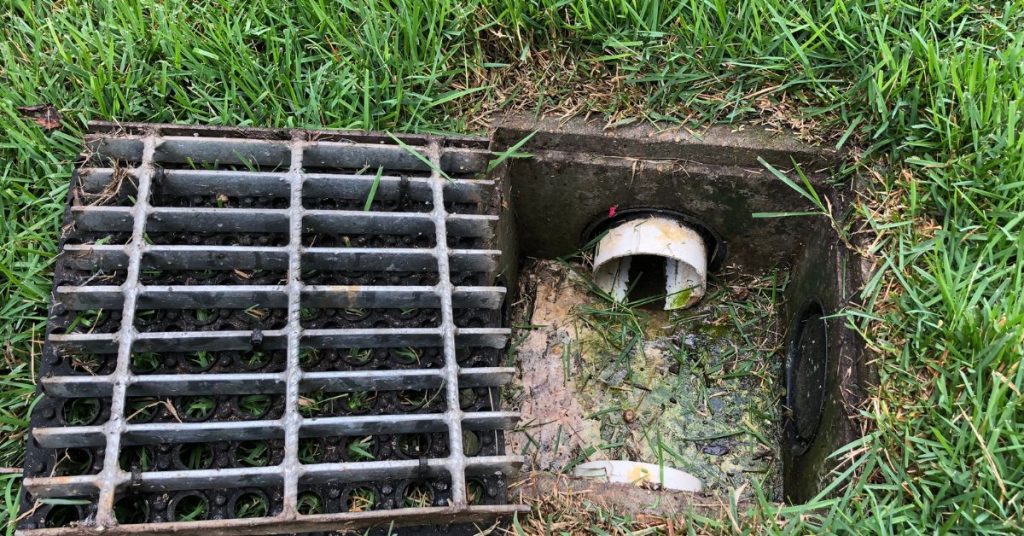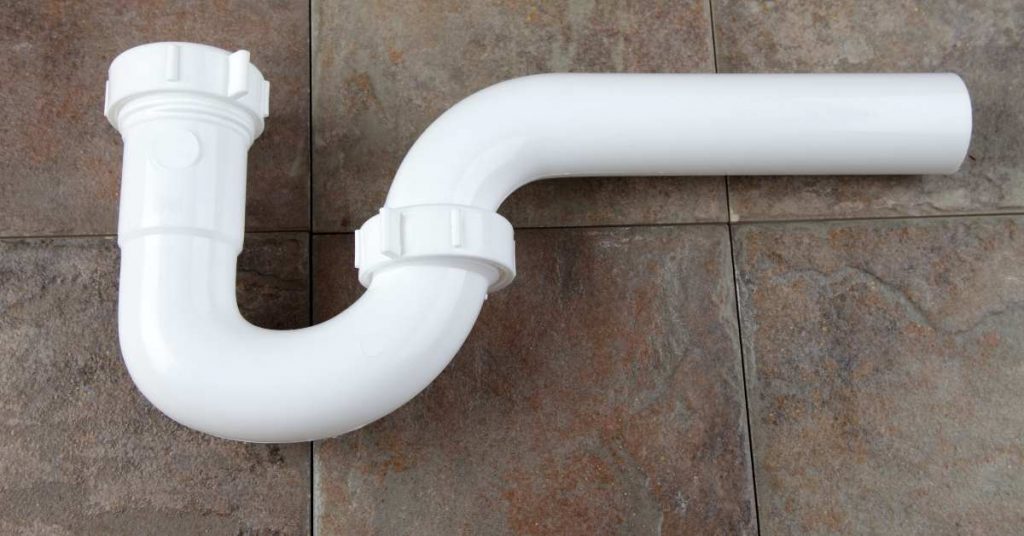As a homeowner, every once in a while you will need to unclog a drain. And most homeowners prefer doing it themselves given how expensive plumbers are.
The thing about unclogging drains is that it is not a fun thing to do. Most of us want to get over and done with it as fast as possible. And that is where Drano comes in.

This is however a problem for folks on a septic system. With a septic system, you do not know what drain cleaner is septic-safe and which isn’t.
So, is Drano safe for septic systems? Should you use Drano to unclog drains if you are on a septic system?
Although advertised as septic-safe, Drano and other chemical drain cleaners are not safe for use in septic systems. They contain harsh chemicals like sodium hydroxide (lye), bleach, aluminum and some even acids which kill the bacteria inside septic tanks.
But what does Drano say about this? Well, quite the opposite.
According to SC Johnson (the company which manufactures Drano), Drano drain cleaners are septic-safe and will not upset the bacterial action in septic systems.
And what do plumbers say about Drano?
Plumbers have for years unanimously advised against the use of Drano to unclog drains whether on a septic system or not. For more information on why plumbers hate Drano check out this post.
There is no chemical drain cleaner that is safe for septic systems. If you want to unclog a drain connected to a septic system, try a combination of baking soda, vinegar and boiling water. You can also plunge or snake the drain and when all fails contact a plumber.
Not only is Drano bad for your septic system, it is also bad for your plumbing. It softens PVC pipes, weakens steel pipes and also eats away the glue that binds pipes together.
In short, you should not use Drano when on a septic system, have more than one clogged drain, you have old pipes and most importantly never in a toilet drain. In fact, if you can completely avoid Drano then do it.
How a Septic System Works

To start with, installing a septic system is not cheap and you should therefore take care of it to prevent expensive repairs. One good way of taking care of a septic system is by monitoring what goes down each drain.
When you are on a septic system, all the fixtures’ drain lines in your house are connected to the main sewer line outside your house which drains to the septic tank.
A septic tank is a simple underground tank where organic waste from your house is decomposed by bacteria. It is in your best interest to keep the bacteria inside the septic tank “safe” from any harm.
A septic tank has 3 kinds of waste. When the organic waste is decomposed by the bacteria, solid waste settles at the bottom of the tank and is called sludge.
There is then the clear water at the middle and then the fats, oils and grease forming a layer at the very top. Try as much as possible to limit the grease going down to your septic tank.
An outlet near the top of the tank allows clean water to exit the tank and enter the drain field, also known as the leach field. In the drain field, the clean water percolates through the ground and goes back to the water table.
It is usually very important to ensure that the sludge does not access the drain filed. You also do not want the sludge backing up to the house.
So, how does Drano and other chemical drain cleaners affect this balance? Well, let us look at it.
How Drano Affects Your Septic System

To understand how Drano affects your septic system, you have to first understand how Drano works. So, what is inside a bottle of Drano?
Drano’s main/active ingredient is sodium hydroxide, which you may also know as lye or caustic soda. It also contains bleach, aluminum and salt.
When you pour Drano down the drain, a series of chemical reactions takes place. The first reaction is the decomposition of organic waste by the lye.
Lye then reacts with aluminum in an exothermic reaction that releases a lot of heat. The heat is for accelerating the decomposition process of the organic waste.
If you had a clog in your drain and the Drano clears it, the chemicals will end up inside the septic tank. And it is actually a lot of chemicals.
The recommendation by Drano is half the bottle for light clogs and the whole bottle for tough clogs. The problem is that there is no guarantee that the decomposition process ends in the drain line.
Actually, you can be sure that the decomposition continues inside the septic tank as well. Since the bacteria inside the septic tank are organic as well, there is nothing to stop the Drano from killing it.
Without the bacteria (or when most of the bacteria have been killed), the decomposition of waste inside the septic tank will not happen or it will happen so slowly. Two things will happen when that is the case:
- The sludge will access the drain field and since the drain filed is only designed to handle liquids it will end being clogged and therefore unable to drain.
- Raw sewage will start to back up into the house through sinks, shower and toilet drains.
Both of these problems are very expensive to fix and will need to be done by a professional. For instance, the cost for unclogging a drain field is somewhere between $1000 and $5000.
How Do You Unclog a Drains on a Septic System?

Fortunately, there are a few good methods you can use to unclog a drain that is on a septic system. Here are some of them:
1. Use Baking Soda, Vinegar and Boiling Water
You would be surprised by how many clogs you can clear using hot water only. Hot water will melt grease clogs in kitchen sinks and hair ball clogs in bathroom sink and shower/bathtub drains.
You can however take it a notch higher by using readily available products like baking soda and vinegar.
When mixed together, baking soda and vinegar create a fizzing reaction which is what breaks down the clog. The hot water then melts the clog further and flushes it down the toilet.
- Start by draining any standing water that you may have in the clogged drain. This allows the solution to work on the clog directly.
- Pour 1 cup of baking soda followed by another cup of vinegar down the drain. Wait for about 15 minutes for the solution to break down the clog.
- Dump a gallon of boiling water down the drain and see what happens. This method is very effective in unclogging drains and you therefore don’t need to use Drano and other harsh chemicals.
Never use boiling water in a toilet drain since it can crack the bowl. Hot water from the faucet is sufficient to do the job. Actually, even Drano advises against the use of Drano in toilets since the heat produced by the reactions can crack the toilet.
2. Plunge the Drain
A drain plunger is another simple tool that will clear most clogs. You just need to start by selecting the right plunger.
Use a flange plunger to unclog a toilet drain and a cup plunger to unclog other types of drains.
To clear a clog using a plunger, make sure there is some water inside the fixture you want to unclog. If it is the toilet or sink, you want it to be at least ¼ full.
The water helps the plunger seal better around the drain opening. Also, don’t forget to plug off the overflow drains in sinks or bathtubs. Without doing that, the pressure generated by the plunger will be lost through the overflow drain.
While plunging, start off gently and then plunge aggressively for a couple of minutes.
3. Snake the Drain

Drain snakes helps by hooking and pulling the clog to the surface or by shredding the clog to tiny pieces. Unfortunately, drain snakes are not that easy to use especially if it is your first time and that is why I wrote this post.
Just remember that if you have a clogged toilet and are on a septic system, there are special toilet drain snakes (toilet augers) which help you clear the clog without scratching the bowl with the auger head.
When dealing with clogged bathroom fixtures like sinks, tubs and shower drains, there is a very simple and cheap tool you can use to clear the clog.
A zip-it tool, also known as a drain hair removal tool is a thin plastic snake that you just insert inside the problematic drain and pull out the hair clogging it. Needless to say, most bathroom fixtures are clogged by hair.
Another alternative is a wire coat hanger. Straighten the hanger using pliers and make a hook on one of its end. Use the hooked end to pull out hair from the drain then flush it with hot water.
4. Clean the P-trap

This method works for bathroom and kitchen sink. The P-trap is the U-shaped bend under the sink.
If you have a clogged sink, the clog will most likely be inside the P-trap. By removing and cleaning the P-trap, you will have cleared the drain without using any products.
- Place a pan or bucket under the P-trap to catch the water already inside the drain.
- Disconnect the P-trap with your hands and only use a wrench if the connections are too tight.
- Inspect and clean the P-trap to completely remove the gunk.
- Check if the pipe leading to the wall is clogged as well then clean it too.
- Connect the P-trap back and flush the drain line with hot water.
And basically that is why you should not use Drano in septic systems and what to do instead. I hope this guide was helpful.
Is Liquid Plumber Safe For Septic Systems?
Liquid Plumr, like many chemical drain cleaners, can be used with caution in septic systems, but it should be used sparingly and according to the manufacturer’s instructions. Here are some points to consider regarding Liquid Plumr and septic systems:
- Moderation: It’s crucial to use Liquid Plumr in moderation. Excessive use of chemical drain cleaners can harm the beneficial bacteria in your septic tank, which are essential for breaking down waste.
- Follow Instructions: Always follow the manufacturer’s recommended dosage and instructions when using Liquid Plumr or any chemical drain cleaner.
- Preventative Measures: To minimize the need for drain cleaners, consider using drain screens or strainers to catch debris before it enters the plumbing system.
- Mechanical Alternatives: Whenever possible, use mechanical methods like plunging or using a plumbing snake to clear clogs instead of relying on chemical drain cleaners. These methods are typically safer for septic systems.
- Regular Maintenance: Regular septic system maintenance, including pumping the tank as recommended by professionals, can help maintain its health and functionality.

